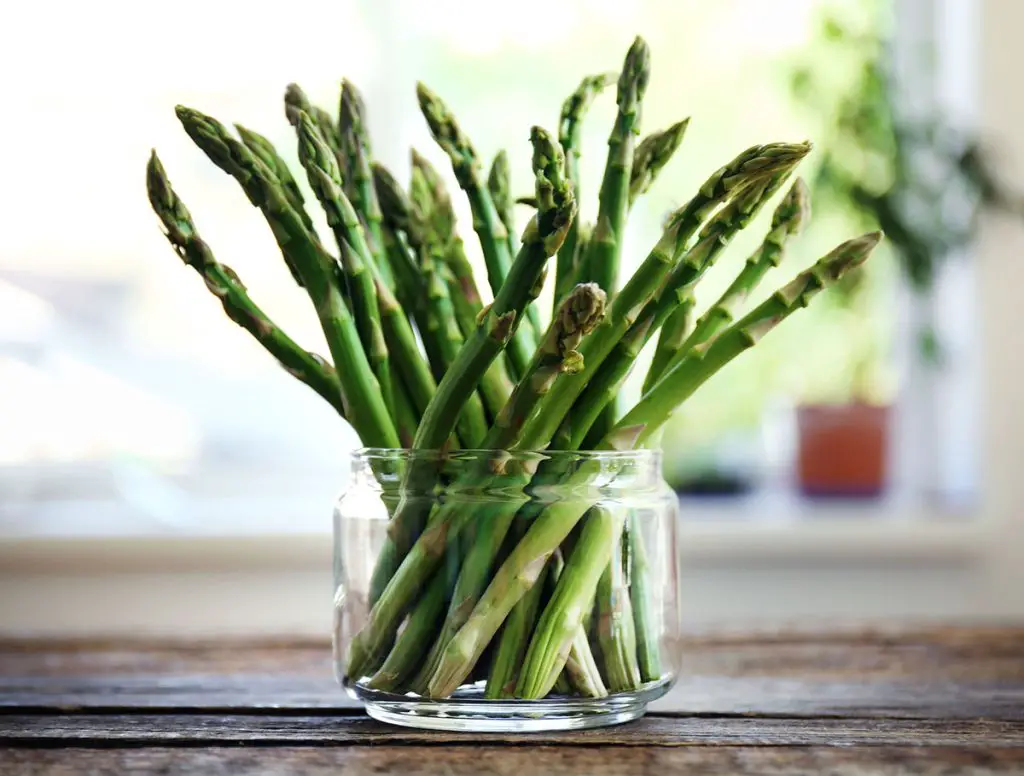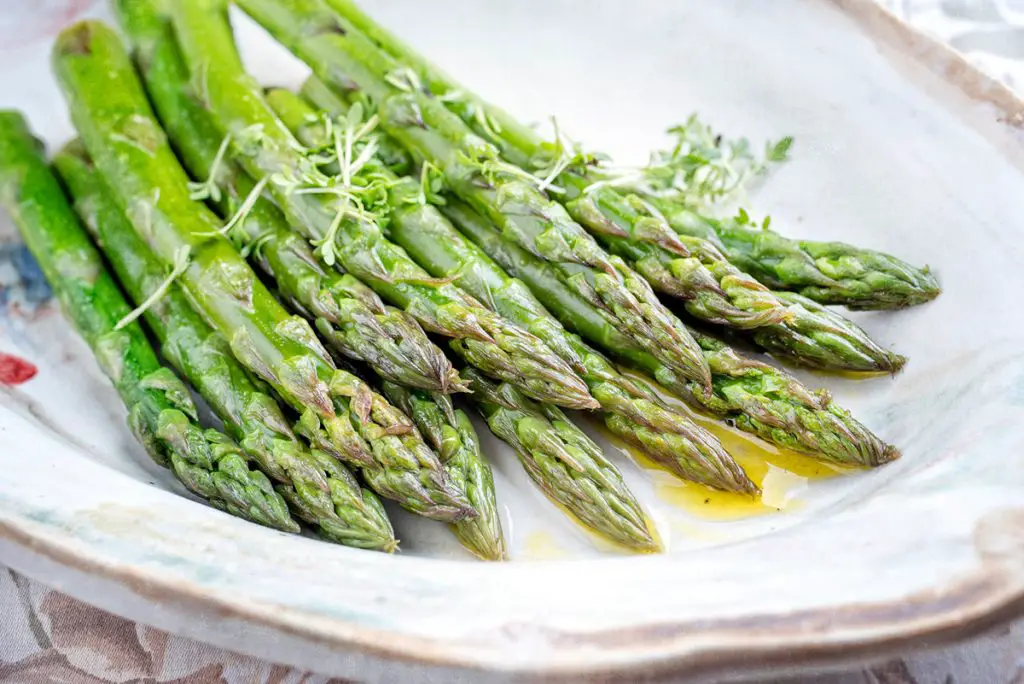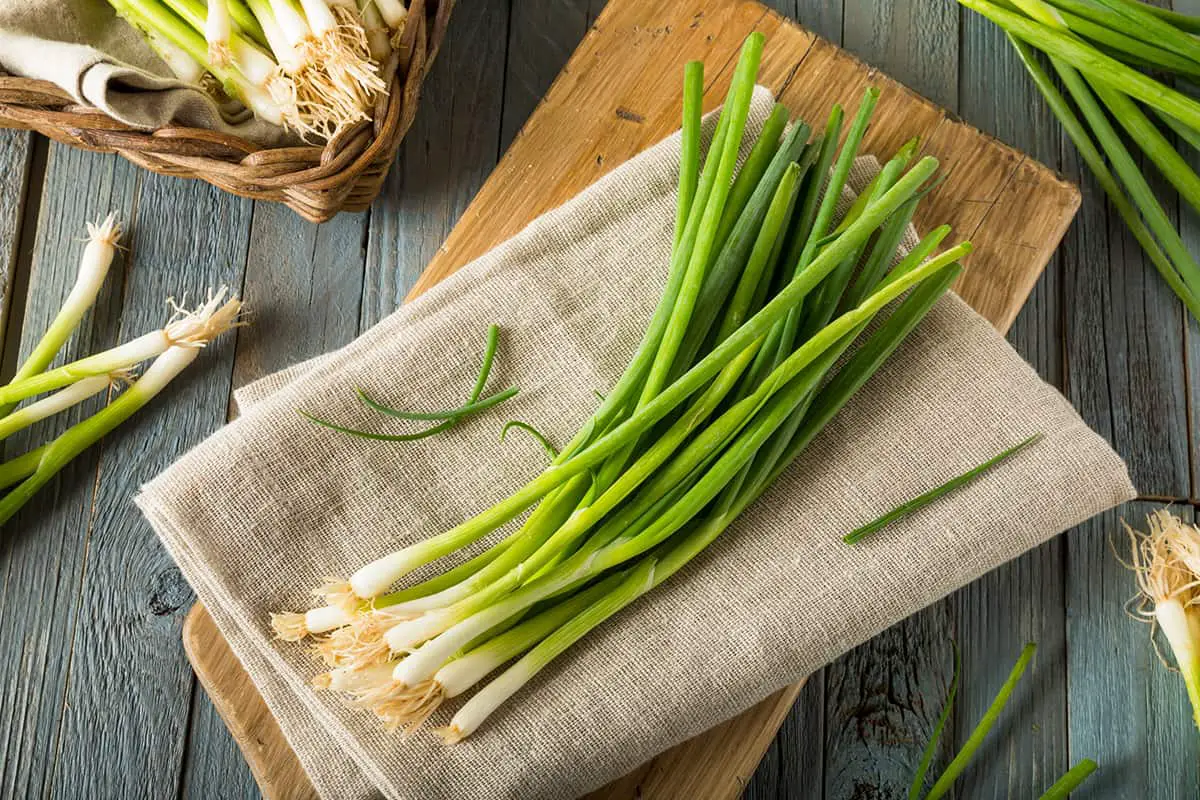2 Best Ways to Freeze Asparagus (Blanching or Steaming)
Asparagus takes at least three years to grow from a seedling to a plant that can be annually harvested, the stalks of which will only last three or four days in your refrigerator. But what if you want to preserve it longer? Is freezing asparagus an option?
You can freeze asparagus by either blanching or steaming it first. If you choose steaming, the asparagus will lose its color and won’t last as long in the freezer. This makes blanching the preferred method to use prior to freezing the asparagus. Frozen asparagus can last up to 8 to 12 months.
The rest of this article will give you step-by-step instructions on how to best freeze asparagus. I’ll also discuss whether or not you should freeze asparagus or store it another way.
How To Freeze Asparagus
No matter how you choose to freeze your asparagus, always get the freshest and freeze it as early as you can. Here are the steps you’ll need to follow:

Wash and Trim the Asparagus
The first step in freezing asparagus is to wash all the dirt and trim or snap the hard and woody end off. You can do this by either bending the bottom of the spear until it snaps or cutting the woody end off with a knife. The end is usually about an inch (2.5 centimeters) long.
You can peel the ends and freeze them, too—they’re the best part of the spear in some dishes. Or you can throw the bottoms in the trash.
To blanch your asparagus, either leave it as whole spears or cut the spears into 1 to 2 inch (2.5 to 5 centimeter) pieces.
Blanch the Asparagus
First, fill a large pot with water and bring it to a boil. You need about 1 gallon (3.78 liters) per 1 pound (0.44 kilograms) of asparagus. Add salt to season.
As the water boils, prepare an ice bath, by taking a large bowl and filling it with water and ice.
If you have multiple sizes of asparagus, separate them by thickness. Don’t blanch thin spears with thick spears because they have different cooking times. Once the water is boiling, blanch the asparagus. The duration in the water depends on its thickness: the National Center for Home Food Preservation (HFP) says to blanch thin spears for 2 minutes, medium for 3, and thick spears for 4 minutes.
You know it’s blanched when the asparagus is a vibrant and bright green.
Once the asparagus is cooked, use tongs to place the cooked asparagus into the ice bath for a couple of minutes. If the water becomes discolored or begins to warm up, change it. This allows the asparagus to stop cooking and prepares it to freeze.
After a couple of minutes in an ice bath, drain the asparagus in a colander and pat completely dry with a paper towel.
Flash Freeze the Asparagus (Optional)
This step isn’t required, but the asparagus will stick together and clump if you don’t flash freeze it.
Take the dried blanched asparagus spears and place them on a cooled baking sheet in a single layer. Then put them into the freezer for 1 to 2 hours.
Freeze the Asparagus
Once done drying or flash freezing, put the asparagus into freezer bags or airtight containers, date them, and place them in the freezer.
Here’s a short YouTube video from Jerry James Stone on how to freeze asparagus if you’d like a visual guide:
How To Freeze Asparagus Without Blanching (Steaming)
If you feel uncomfortable blanching your asparagus, you could steam it instead. Just know that the asparagus won’t last as long and will lose its vibrant green color much more quickly.
The method is the same as blanching, but you steam the asparagus.
How To Steam Asparagus
To steam asparagus, begin by putting about 1 inch (2.5 centimeters) of water in a large pot or saucepan and bring it to a boil. Place a steamer basket on top of the pot or saucepan. The OXO Good Grips Steamer is highly rated on Amazon.com if you don’t already have a steamer basket.

While the water boils, prepare an ice bath and categorize the asparagus by thickness if you have multiple sizes. Don’t steam differing spear thicknesses together.
To steam, put the asparagus in the steamer basket and place a lid on top of the pan or saucepan. Steam the asparagus for 3 to 6 minutes, depending on thickness. You know that it’s ready when the asparagus is a vibrant green.
Once the asparagus is steamed, set it in an ice bath.
If you’d like a visual guide, Jerry James Stone has another short YouTube video on freezing asparagus without blanching:
How To Best Preserve Asparagus
Freezing asparagus is only one way to preserve it. You could also can it or even dry the asparagus! With all of these options, which preservation method is best?
Overall, freezing is the best method to preserve asparagus. It’s the cheapest option since everything required to freeze asparagus are everyday household items. Freezing is also the best method to maintain the color and taste of asparagus.
Canning Asparagus
To can your excess asparagus, use a pressure canner because of its low acid content.
There are two methods of canning vegetables: raw pack and hot pack. The hot pack method boils the vegetable before canning, whereas the raw method does not.
Michigan State University recommends 30 to 40 minutes for both dial-gauge pressure canners (Amazon) and weighted-gauge pressure canners.
Drying Asparagus
Drying asparagus is very cost-effective because, although you may need to buy a food dehydrator (Amazon), dried vegetables last the longest.
You can dry or dehydrate asparagus in two ways: using a food dehydrator or oven drying. A food dehydrator is ideal because it’s relatively cheap, can dry large batches of food, and is easy to use.
Dried asparagus is used in many dishes, most commonly soups or stews.
Comparing Preservation Methods (Asparagus)
This table compares the three asparagus preservation methods by covering the pros and cons for each method.
| Preservation Method | Pros | Cons |
| Freezing | Retains color and flavor well. Doesn’t require special equipment. | Needs a freezer. |
| Canning | No need to store in cool or cold places. | Pressure canners can be very expensive. Asparagus may get mushy. |
| Drying | Dried vegetables last much longer. No need to store in cool or cold places. | Not all spears dry well. Takes a long time to dehydrate. |
How To Cook Frozen Asparagus
There’s nothing special you have to do to cook frozen asparagus. It’s best not to thaw the asparagus before cooking.
Steaming the asparagus isn’t the only option for cooking, despite what pre-bought frozen vegetable bags may say. If you’re having burgers with asparagus as a side, grill your frozen asparagus with the burgers!
In the mood for a stir-fry? Frozen asparagus is a perfect add-in.
Some other common recipes with frozen asparagus include quiches, frittatas, soups, and pasta dishes.
Overall, if you use fresh asparagus in a dish, you can use frozen asparagus as well.
Conclusion
Freezing is the best way to preserve any excess asparagus.
You should first blanch or steam the asparagus with the option to flash freeze before putting the asparagus in freezer bags or airtight containers.
Other options for preserving asparagus include canning or drying/dehydrating. But when you can or dehydrate, the vibrant green color of the asparagus dissipates, and the flavor diminishes.






